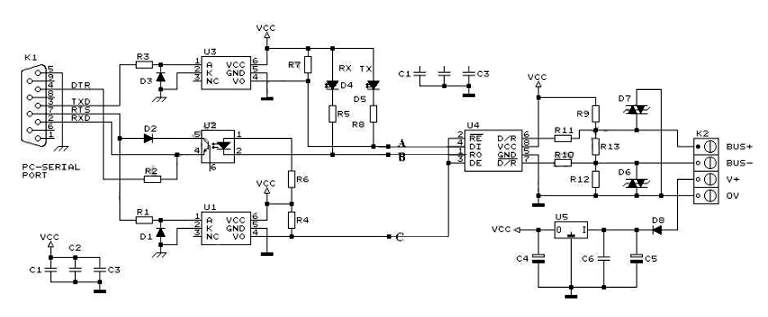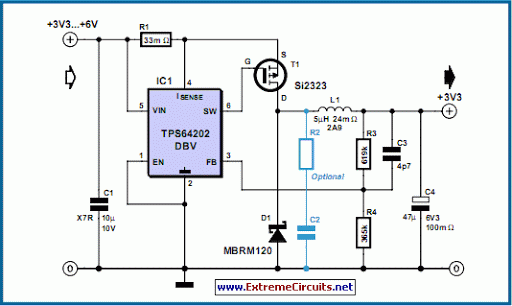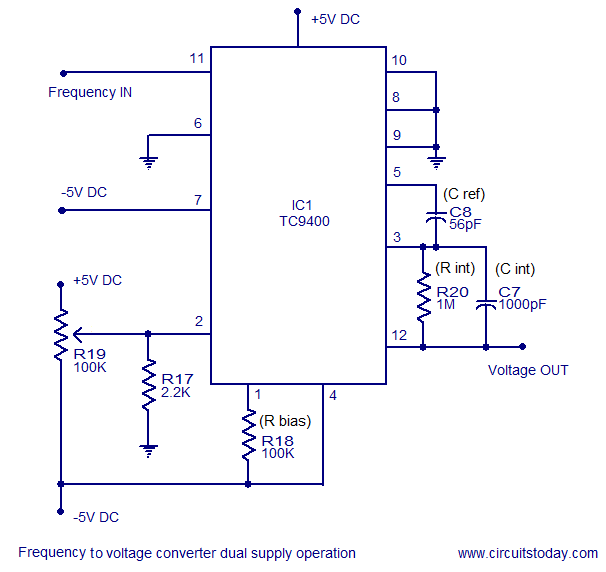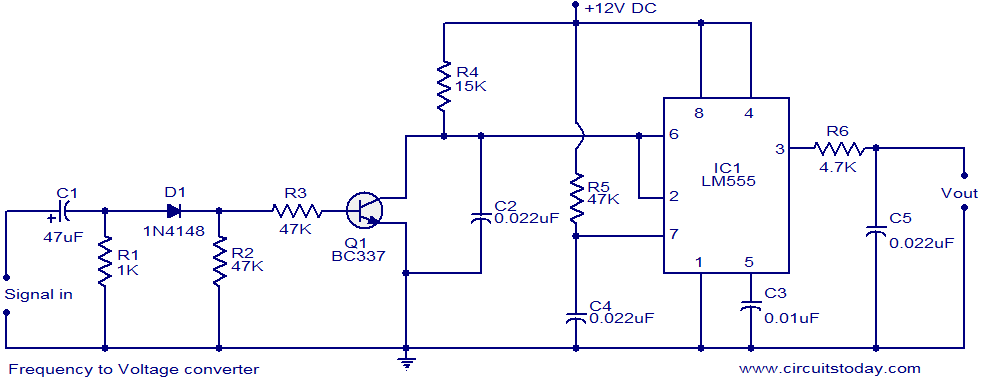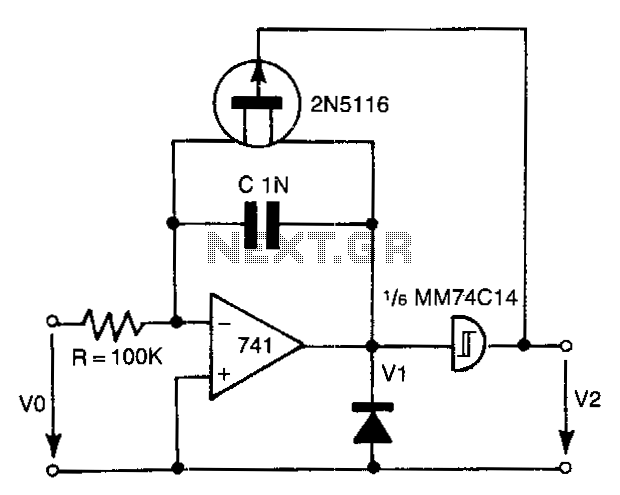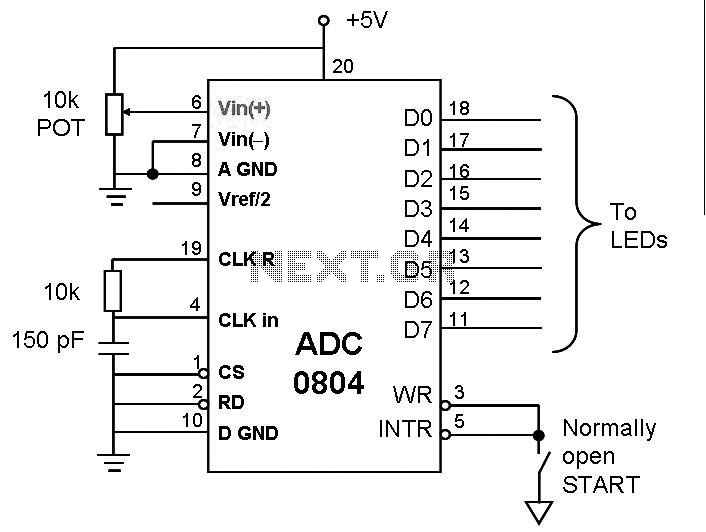
Ac-To-Dc Converter
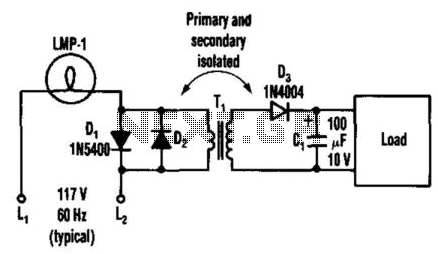
By connecting two back-to-back diodes in series with an AC power circuit, a voltage of approximately 1.4 Vpp can be achieved. This voltage is beneficial for energizing the primary coil of a small transformer. The voltage induced in the secondary coil can subsequently be rectified and utilized to power solid-state control circuits. The forward voltage drop of the diodes remains constant and stable across a broad range of AC circuit power variations. The voltage generated across the transformer windings is also unaffected by fluctuations that may arise from changes in the circuit's current or voltage. In this circuit, a lamp (LMP-1) is linked to the primary AC input line (L1 and L2) via a pair of inverse-parallel-connected power diodes (D1 and D2). As power flows to the lamp, a voltage drop of approximately 0.7 V is alternately developed across each diode. This voltage feeds the primary of a small transformer (T1). T1 can be a small transformer used in an 8- to 500-transistor radio output, among other applications. This setup will provide around 11 Vpp across its secondary winding. LMP1 may consist of a small 120-V lamp rated between 5 to 25 W.
The circuit utilizes two diodes (D1 and D2) configured in an inverse-parallel arrangement to efficiently rectify the AC voltage. When the AC voltage is applied, each diode conducts during alternate half-cycles, allowing the circuit to maintain a steady output voltage of approximately 1.4 Vpp, which is crucial for powering the primary coil of transformer T1. The transformer serves to step up the voltage for the secondary side, providing an output of around 11 Vpp, suitable for various applications including powering solid-state circuits.
The selected lamp (LMP-1) is connected to the AC input lines (L1 and L2) and operates within a voltage range of 120 V, drawing power between 5 to 25 W. This configuration ensures that as the lamp operates, it also maintains a stable voltage across the diodes, which in turn regulates the voltage supplied to T1. The transformer T1 can be chosen based on the specific requirements of the application, whether it be for radio output or other low-power electronic devices. The overall design ensures that the system remains efficient and reliable, with minimal variation in output voltage due to the inherent characteristics of the diodes and transformer. By coupling two back-to-back diodes in series with an ac power circuit, a voltage of about 1.4 Vpp can be obtained. This voltage is useful for exciting the primary coil of a small transformer. The voltage induced in the secondary coil can then be rectified and used to power solid-state control circuits. The forward-voltage drop of the diodes is inherently constant and stable over a wide range of ac-circuit power variations.
The resulting voltage developed across the transformer windings is also free from variation that might be caused by changes in the circuit"s current or voltage. In the circuit, a lamp (LMP-1) is connected to the primary ac input line (Ll and L2) through a pair of inverse-parallel-connected power diodes (Dl and D2).
As power flows to the lamp, a drop of about 0.7 V is alternatively developed across each of the diodes. This voltage feeds the primary of a small transformer (Tl). T1 can be a small 8- to 500- transistor radio output, etc. This will deliver about 11 Vpp across its secondary winding. LMP1 can be a small 120-V lamp of 5 to 25 W, etc.
The circuit utilizes two diodes (D1 and D2) configured in an inverse-parallel arrangement to efficiently rectify the AC voltage. When the AC voltage is applied, each diode conducts during alternate half-cycles, allowing the circuit to maintain a steady output voltage of approximately 1.4 Vpp, which is crucial for powering the primary coil of transformer T1. The transformer serves to step up the voltage for the secondary side, providing an output of around 11 Vpp, suitable for various applications including powering solid-state circuits.
The selected lamp (LMP-1) is connected to the AC input lines (L1 and L2) and operates within a voltage range of 120 V, drawing power between 5 to 25 W. This configuration ensures that as the lamp operates, it also maintains a stable voltage across the diodes, which in turn regulates the voltage supplied to T1. The transformer T1 can be chosen based on the specific requirements of the application, whether it be for radio output or other low-power electronic devices. The overall design ensures that the system remains efficient and reliable, with minimal variation in output voltage due to the inherent characteristics of the diodes and transformer. By coupling two back-to-back diodes in series with an ac power circuit, a voltage of about 1.4 Vpp can be obtained. This voltage is useful for exciting the primary coil of a small transformer. The voltage induced in the secondary coil can then be rectified and used to power solid-state control circuits. The forward-voltage drop of the diodes is inherently constant and stable over a wide range of ac-circuit power variations.
The resulting voltage developed across the transformer windings is also free from variation that might be caused by changes in the circuit"s current or voltage. In the circuit, a lamp (LMP-1) is connected to the primary ac input line (Ll and L2) through a pair of inverse-parallel-connected power diodes (Dl and D2).
As power flows to the lamp, a drop of about 0.7 V is alternatively developed across each of the diodes. This voltage feeds the primary of a small transformer (Tl). T1 can be a small 8- to 500- transistor radio output, etc. This will deliver about 11 Vpp across its secondary winding. LMP1 can be a small 120-V lamp of 5 to 25 W, etc.
